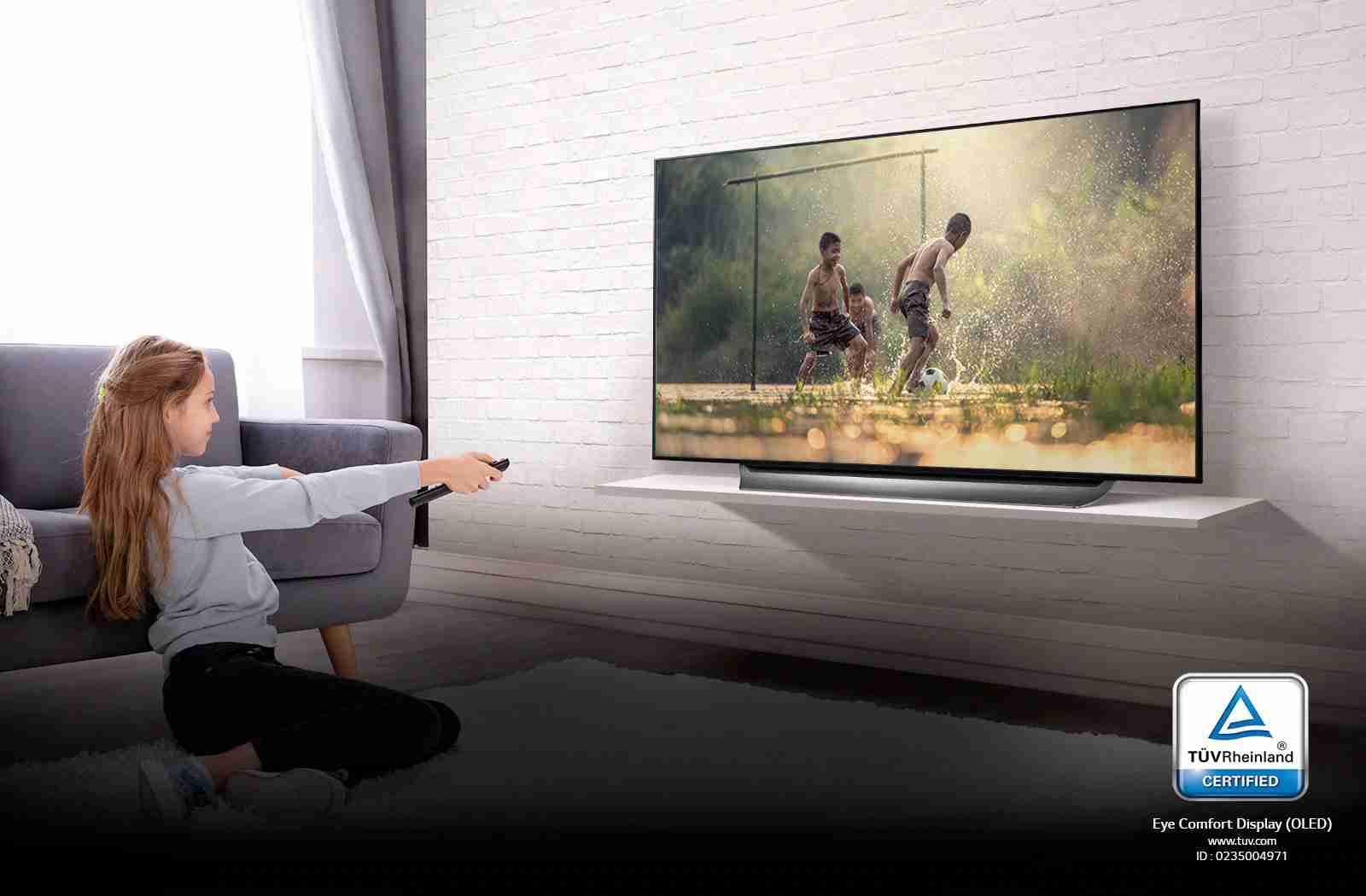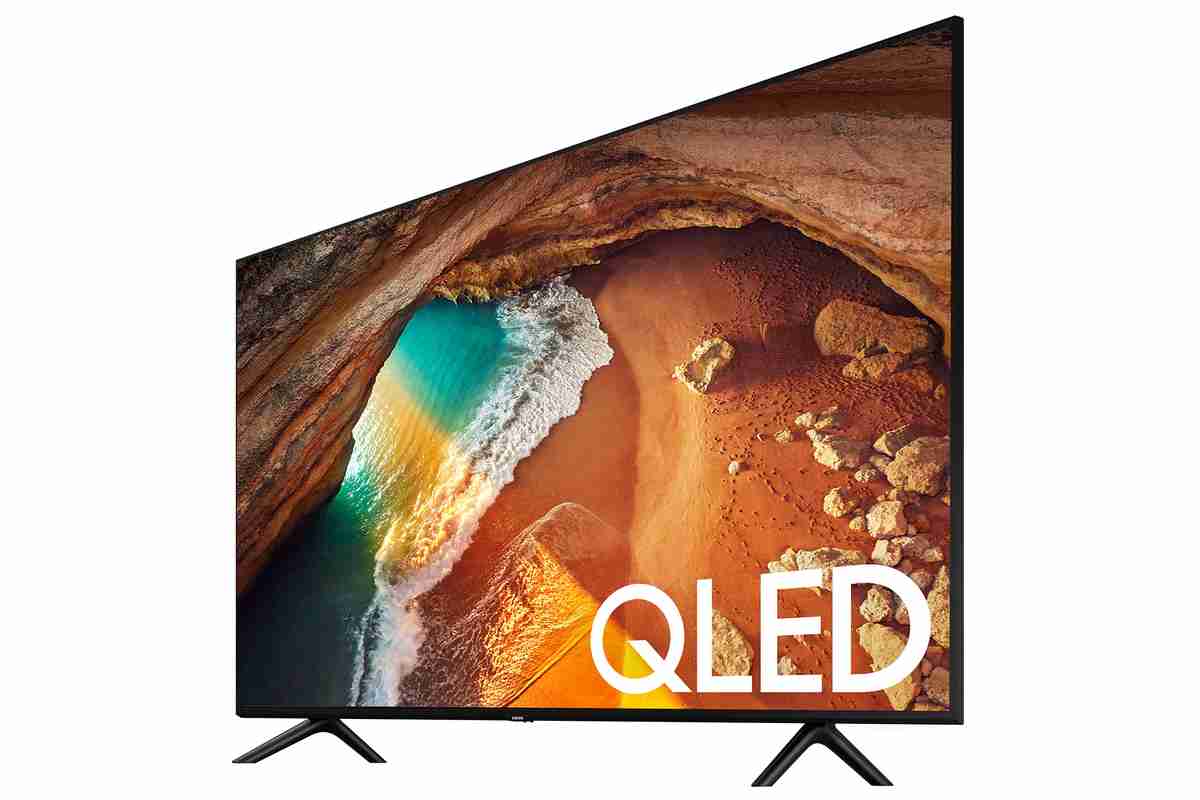The best drone you can get for less than a great
DJI Mavic Air 2 is the best drone for its significant upgrade to its predecessor. And now it is our new favorite flying camera. By improving coverage, a noticeably longer battery life, a great 4K / 60p video, and a whole host of new shooting features, all for the same. Minors are niggles, DJI Mavic Air 2 is a great choice for both still photographers and filmmakers.
Mavic air 2 deals with the comparison
The Mavic Air 2 looks like a smaller Mavic 2 Pro and a larger Mavic Mini. It is slightly larger than its earlier Mavic Air. But remains portable and easy to store in your backpack or camera bag. It’s slightly smaller, shorter wing, and came in three colors that attract you much. It was a more fun design overall. Gray housing on the Mavic line is boring, but it is better in DJI’s current lineup.
The drone is a bit bigger around it than its predecessor, the Mavic Air. But you probably don’t care. At 3.3 by 3.8 by 7.1 inches (HWD) and 1.3 pounds. It is thin enough to find a space inside the photographer’s gear bags.
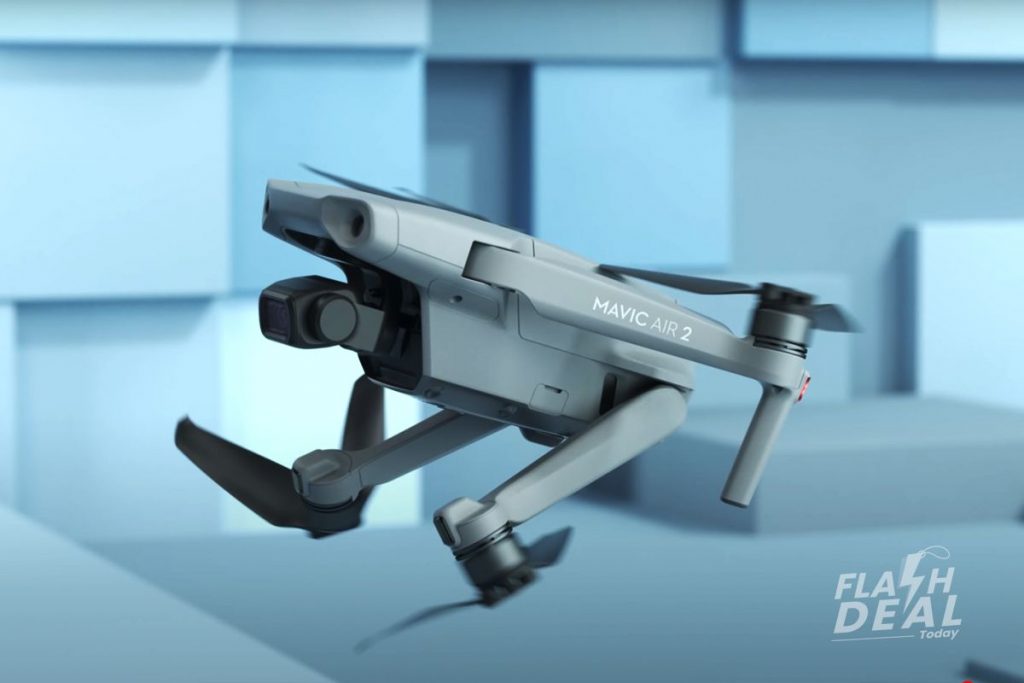
This means that the drone measures a small 180 x 97 x 84mm when folded. Basically equivalent to a 500ml bottle of beer – and only 183 x 253 x 77mm when opened.
At 570g, more than half the weight of the Mavic 2 Pro. Makes it a very portable, and really powerful, drone for both photographers and filmmakers. It is important to note that you may need to register the drone, depends on where you live (see the “Do I need to register?” Section below).
Design and Controller
Capturing the folding design of the Mavic Pro series, the Mavic Air 2 sits on the ground with its rear arms. This means when it weeding in grassy areas, you need to look for the flat ground. Or with short grass to avoid stripping the grass during removal and landing.
It can cause improper flight and the worst, crashes. For this reason, it is worth bringing a small landing mat that can be pegged to the ground to provide a clear and safe take-off area. On harder, flatter surfaces such as tarmac and concrete, this is clearly not a problem.
A more dramatic change found in the design of the controller. It is larger and more boxer than other remotes in the Mavic series. And designed to mount the smartphone at the top rather than at the bottom like previous Mavic models. Your phone is secured with a clamp and get similar to the DJI Phantom series. Though it doesn’t reach far enough to hold the tablet. Fixing the clamp to the controller is quite difficult and keeping the smartphone safe is a struggle sometimes.
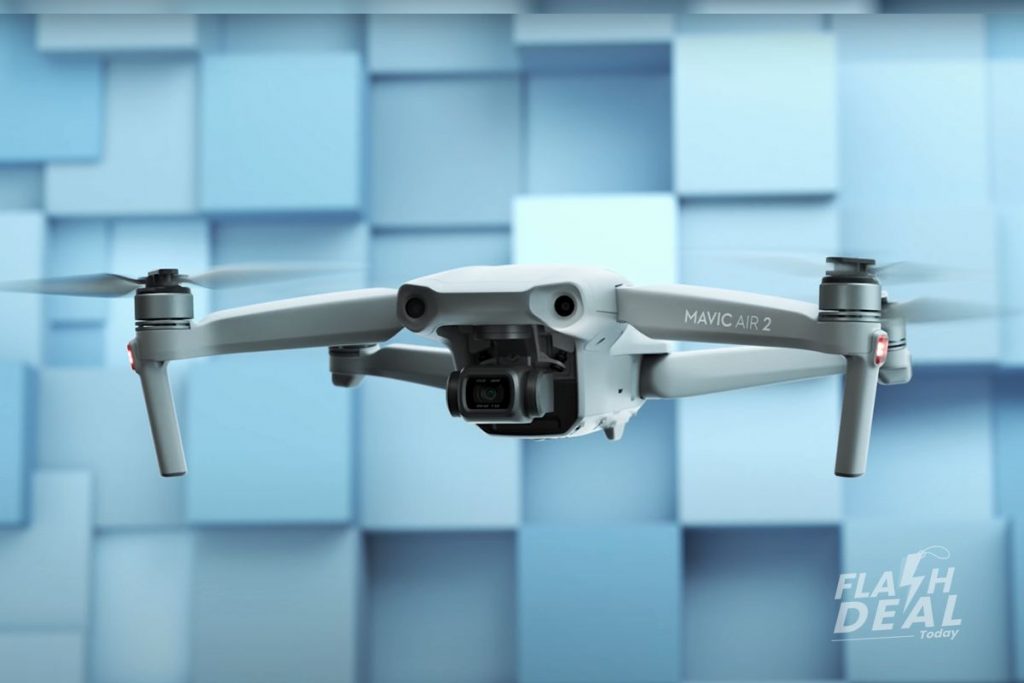
The mode switch is placed in front-and-center in the controller. So the remote pilots can easily switch between tripods, normal, and sport flight modes. Like other Mavic remotes, the Back Home and power button is on the front. The upper-right button still lets you alternate between photos and videos.
This is a nice touch, but the cables are too long for the design. So putting the cable into storage space puts pressure on the cable. That can cause damage to the cable over time. Under the controller, the rods stored in square shapes with rubber. And, also, there are an additional two parts in the box.
The upper-right button has an ‘Fn’ button which enables auxiliary lighting and the additional sensors. That helps with many functions, including smooth landing in low light conditions. Also, you will get a controller wheel on the top left that raises the camera up and down. And the two joysticks are accumulated at the bottom and may not work to fly or be removed for storage.
Features with Flight
Mavic Air 2 includes new motors, new electronic speed controllers, improved battery technology, and advanced aerodynamics. This combination provides flight speeds of up to 42 mph and flight times of up to 34 minutes.
This is a major help in the 21 minute flight time of the original Mavic Air. And it is three minutes longer than the Mavic 2 model. While it doesn’t sound like much, you actually notice an increased flight duration and slower battery drain. The controller also offers increased battery life compared to its predecessor.
It is as easy to fly, thanks to the smart technologies employed by any other DJI drone. So the good thing is that OcuSync 2.0 is not included here. Because there is a much-improved mode of transmission between the controller and the drone used by the original Mavic Air.
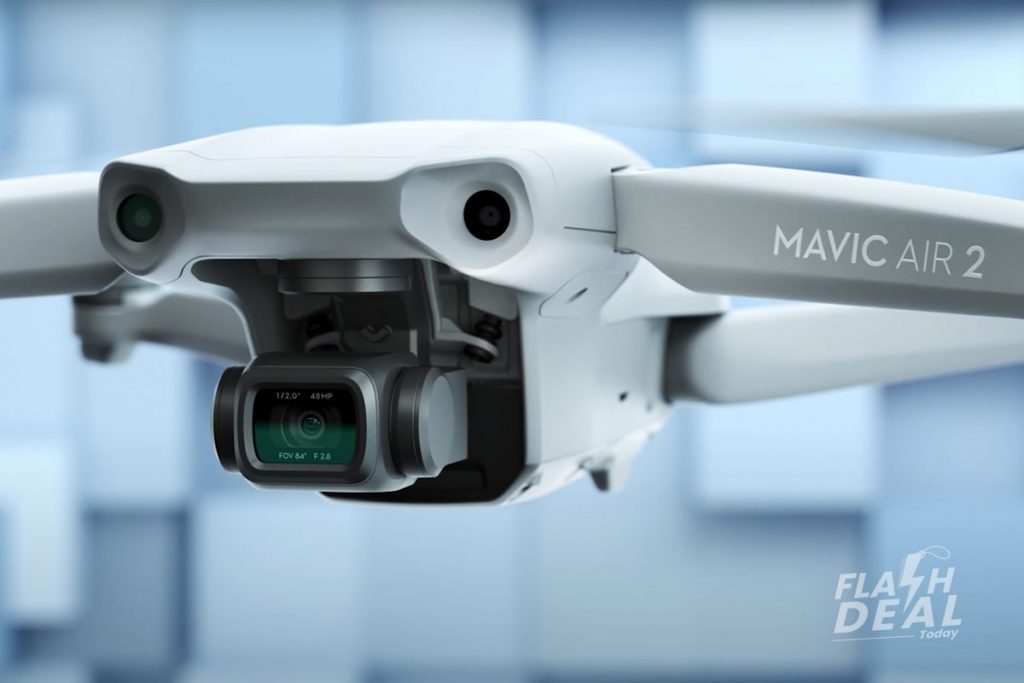
OcuSync 2.0 supports 2.4GHz and 5.8GHz frequencies and can switch between the two when needed. Anti-interference technology also helps block unwanted signals.
Despite using all this new and improved technology, keeping the drone and controller at distances of up to 10 km. The Mavic Air 2 video feed is still wavering and off while the drone is constantly moving. This is a problem with the original Mavic Air, you can slow down when framing shots.
In terms of safety features, the drone provides barrier sensors at the front and rear of the drone. That will help avoid collisions when turned on. It is turned on by default, and for most people keeping them is the best option. Also, there are sensors under the drone to an auxiliary light. So that the automatic landing found similar to the Mavic Pro model. The other safety feature is geofencing, which will prevent drones from flying near high-risk and safe landing locations. Like airports and critical infrastructure.
Mavic air 2 obstacle detection and avoidance system work quite well, DJI calls it APAS. You will get that the drone tends to increase altitude on its own. Not much, but enough to be more careful when flying under low branches; there are no upward facing obstacle sensors.
The expected automated shooting modes are here. You get different types of revelations, including a direct blowback function. Which flies around the subject in an expanding arc, before returning to the original view. There is also an Orbit mode, where you can combine with tracking and surrounding the moving subjects. The Mavic Air 2 doesn’t have obstacle sensors on its sides. So you’ll need to be careful when using it.
The drone has inherited many advanced features from both the Mavic Pro 2 and other professionals. Beyond the safety enhancements, it provides intelligent capabilities in automated flight modes for capturing still images and video. These include FocusTrack, Hyperlapse (up to 8K), and four flight options; Free movement, Circle, and CourseLock.
Videos & Images
There are the automated ‘QuickShot’ flight modes (the drone equivalent to a camera’s ‘automatic’ mode). Helping you create visually engaging videos at the touch of a button. These include Rocket, Circle, Dronie, Helix, Boomerang, or Asteroid.
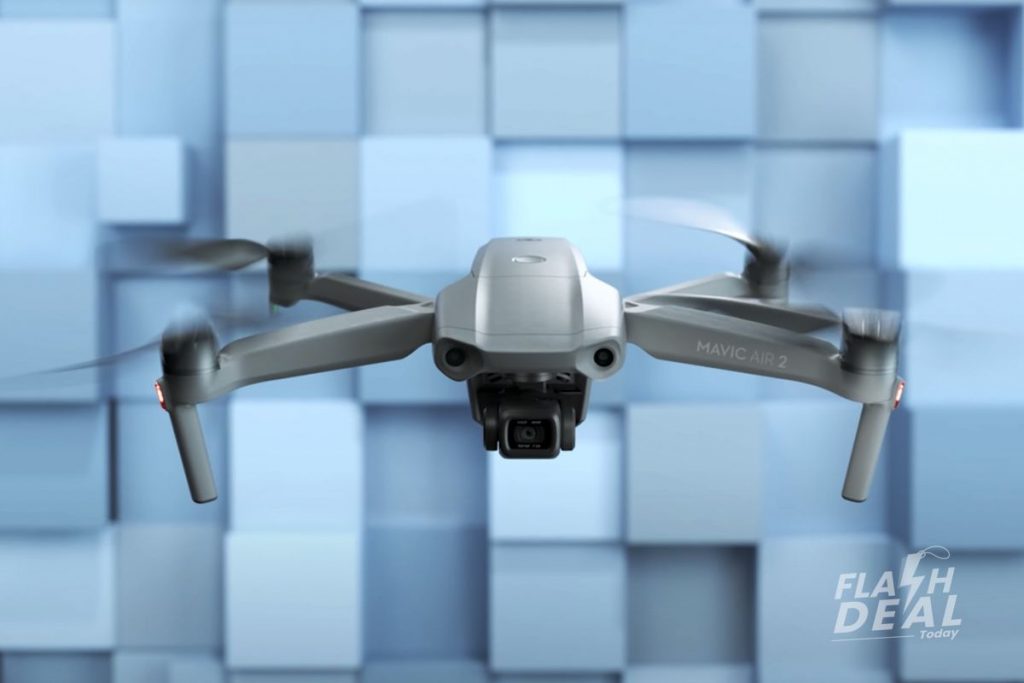
The camera, which uses a 1/2 “Quad Bayer CMOS sensor, is mounted on a stabilized 3-axis gimbal. It can capture Raw images, JPEG images (either 12MP or 48MP resolution). , as well as Raw + JPEG. In addition to standard movements, the gimbal can be tilted up to 24º.
The Mavic Air 2 camera boasts a 24mm (equiv.) Fixed aperture F2.8 lens with 84º FOV. DJI’s Fly combo includes 3 neutral density filters that twist and snap just like the ones for the Mavic 2 Pro.
DJI has also added SmartPhoto modes similar to the computational photography techniques used by many smartphones to improve image quality. These include:
HDR photos: The camera automatically captures 7 different exposures and combines them for a greater dynamic image.
Hyperlight: Images taken in low light conditions, especially on DJI drones, are grainy and contain noise. Hyperlight takes a lot of pictures and combines them for a clear image.
Visual recognition: These mode allow the drone to recognize 5 main parts of a picture – sunset, blue sky, grass, snow, and trees. It will review these things and maximize tone, clarity, and colors.
SmartPhotos was captured at a resolution of 12MP
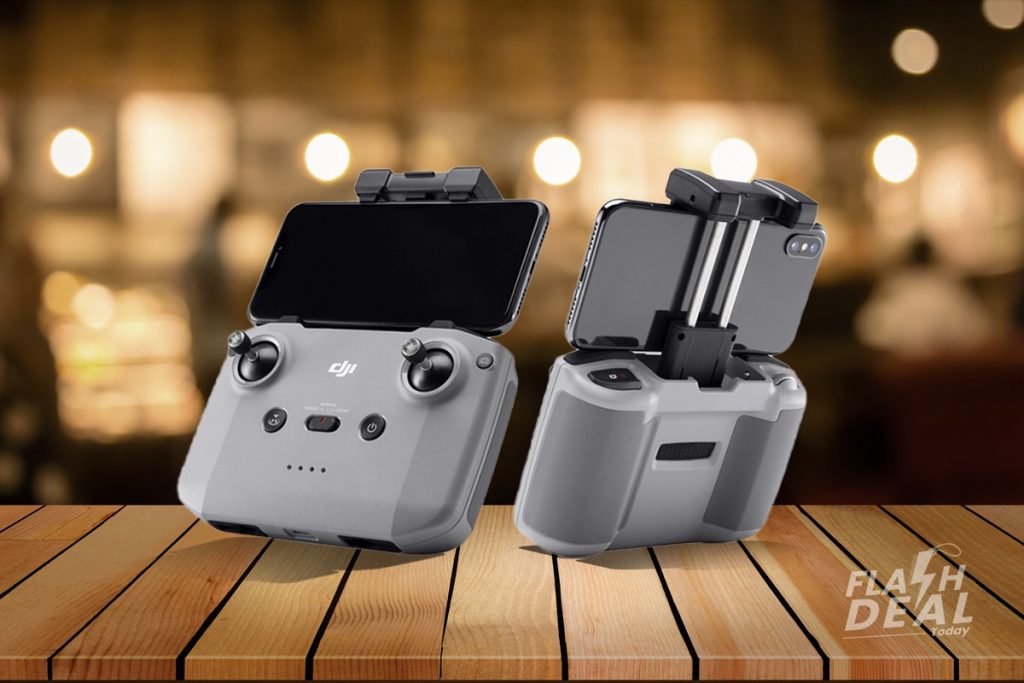
You would use 48MP images that are created using an in-camera interpolation algorithm. When larger images required, Photoshop Protect provides better interpolation. Which results within the Image Size dialog, using the Description Resume option.
For videographers, the Mavic Air 2 brings some firsts to DJI with the flagship. Mavic models lack features, like 4K video at 60fps and slow-motion video at 1080p to 240fps. Therefore, despite the small size, there is certainly scope for professional video use of this drone in certain situations.
Video can be captured in a standard format. So the video equivalent to JPEG, or in a more neutral D-cine-like profile. That displays more detail in shadows and highlights which requires color grading.
HDR video is available at 4K, 2.7K, and FHD up to 30fps. 4K is available up to 60fps, 2.7K up to 60fps, and FHD up to 240 fps. So, video can be shot in MP4 / MOV (H.264 / MPEG-4 AVC, H.265 / HEVC) with a maximum bitrate of 120 Mbps.
Judgment
When you think the Mavic Mini was the most impressive small drone. DJI has given a new name with the Mavic Air 2. Which sits comfortably between that model and the two Prosecutor Mavic 2 models.
The overall design has been dramatically changed with a better connection to the controller. Especially longer battery life, 4K video at 60 fps, 48MP still images from the new 1/2-inch quad buyer sensor, and a whole host of new functionality. This is Significant upgrades over the previous Mavic Air.
For photographers and videographers who need a highly portable drone. Mavic air 2 easily transported with other photographic equipment to shoot RAW images, 4K / 60p video, and slow-motion FHD video. It sets a new benchmark for what one can expect from a drone, now and in the future.
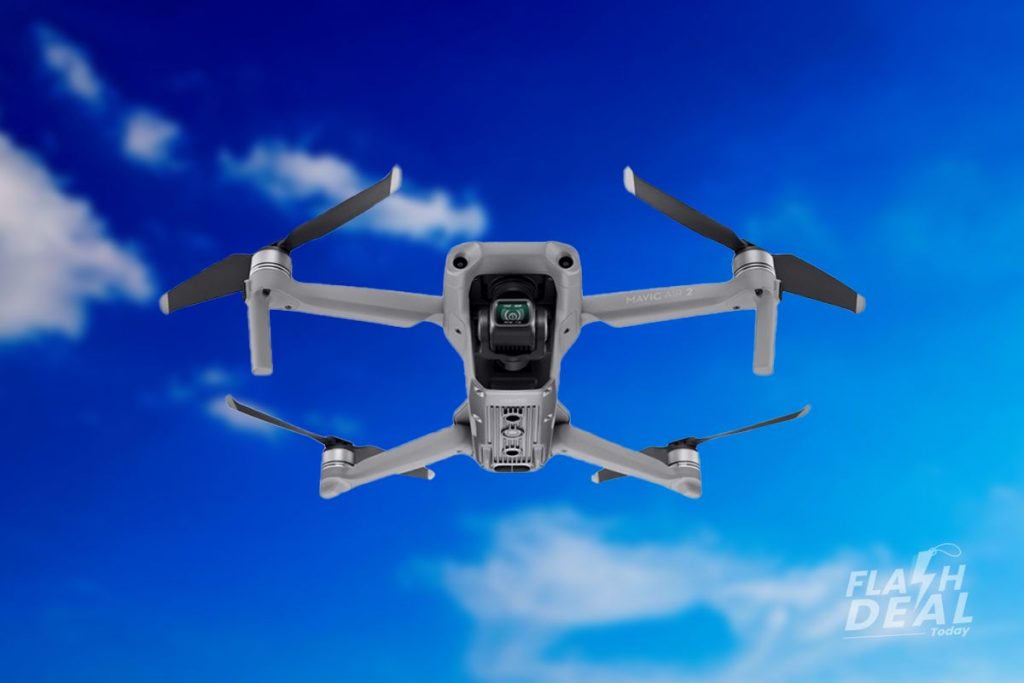
With the launch of the Mavic Air 2, DJI has undoubtedly produced a wide appeal for its impressive smart flight features, picture, and video functionality. Along with upgraded designs, motors, and batteries, as well as previous Sample, will provide significant performance on display.
The Mavic Air 2 is not perfect, but its features with joy to fly and shoot could easily become the most popular DJI drone to date.
Will I need to register?
Before you buy any drone you have to know the rules of law in some regions. Drones overweighting 250g or more need to registered in the US and the UK.
Know about current laws for the drone in the US, UK, and Australia.
US Drone Laws
UK Drone Laws
Australian Drone Law
DJI produces the most consumer-level drones for a wide range of photographers and videographers. So its product line has something amazing for just about everyone.
For example, the lines between different Mavic models can be blurred, which means that both the smaller DJI Mavic Mini 249g (which only records 2.7K Jpegs and videos) and the larger Mavic 2 Pro and Mavic 2 zoom models, all There is direct competition for Mavic Air 2.
Overall, the DJI Mavic Air 2 is the best all-rounder for non-professionals, as it has a wider range of modes (including object tracking) than the Mavic Mini. And while the Mavic 2 Pro and Zoom, respectively, provide a larger sensor and zoom capability that you can’t find in the Mavic Air 2, the latter now offers the greatest value for money.
Need more comparison before making up your decision? Read more of each below: Best Drone Review




